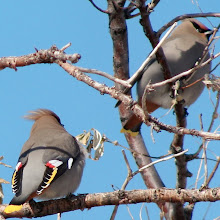On Friday morning, I walked a 4-block section of residential neighborhood in Santa Cruz, and tallied the number of plant species I could see in each yard.
Of course I didn't know scientific or common names for more than 10% of the plants, so I gave them field names to help me remember them, like: Dog Poo Lily, Globehead Spurge, Dani's Magnolia, Giant Red Alien, etc.
It's been indicated that relatively unskilled parataxonomists can often generate reasonable species richness estimates by (roughly) this method. However, Krell (Biodiversity and Conservation, 2004) outlines a number of problems with the Recognizable Taxonomic Units method (he proposes that it often overestimates species richness). In my survey, I guess that I actually underestimated diversity for many yards.
Anyways, I separated the counts by yard, entered the data into Excel, and for analysis, I exported it to R, the latest and greatest (and free) statistical computing environment. Click here for more information on R.
Using the tools in the vegan and MASS packages in R, I made a number of graphs for you to consider:
Figure 1. The number of plants per yard ranged from a low of 2 (the concrete- and asphalt- tolerant weeds in front of the stores bordering busy, noxious Mission street), to a high of 35 species (in a overgrown, but obviously-attended yard on Laurel).
Figure 2. The number of yards in which any given species occurred followed a pattern commonly seen in natural systems (although perhaps more steeply): There are few common species (occurring in >12 yards), and many species that occurred in only one or two yards.
Figure 3. The Shannon-Wiener Diversity indices (H') for each yard. I'm not sure whether or not I should be surprised that the distribution is fairly close to normal.
Figure 4. The species accumulation curve (random collection, 1000 permutations) doesn't appear to level off, suggesting that (at least for awhile), the more yards I survey, the more species I'll add to the total.
Future directions for analysis include: 1) trying to saturate the accumulation curve (ie. how many more yards will I have to survey before I reach a number close to all the species that occur in urban settings in Santa Cruz?), and 2) ordination of the yards with reference to some spatial measure (ie. do neighboring yards share more plant species than yards separated by many blocks?).
I encourage you to download and experiment with the R software, and attempt to do some of this kind of analysis for your home communities. Send me an e-mail, and I will send you the R code for doing these analyses.








No comments:
Post a Comment